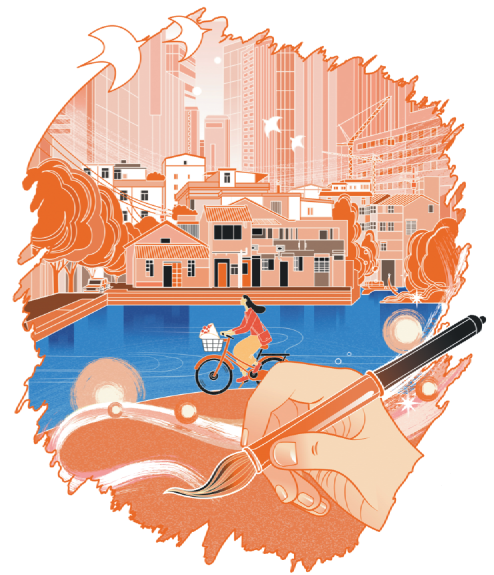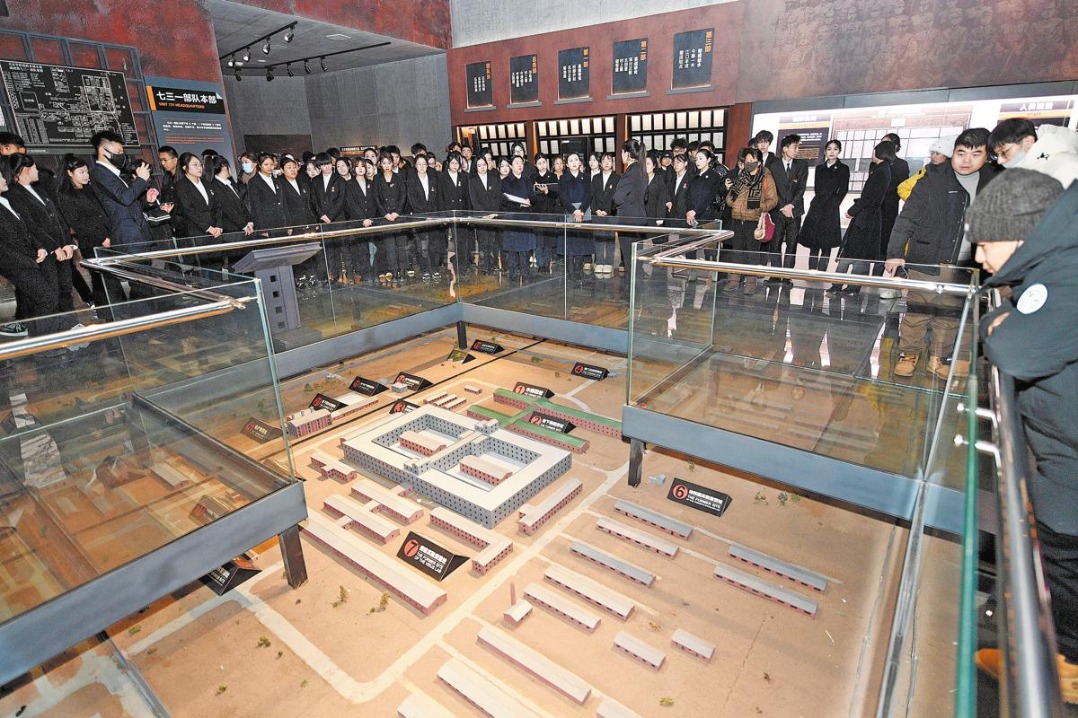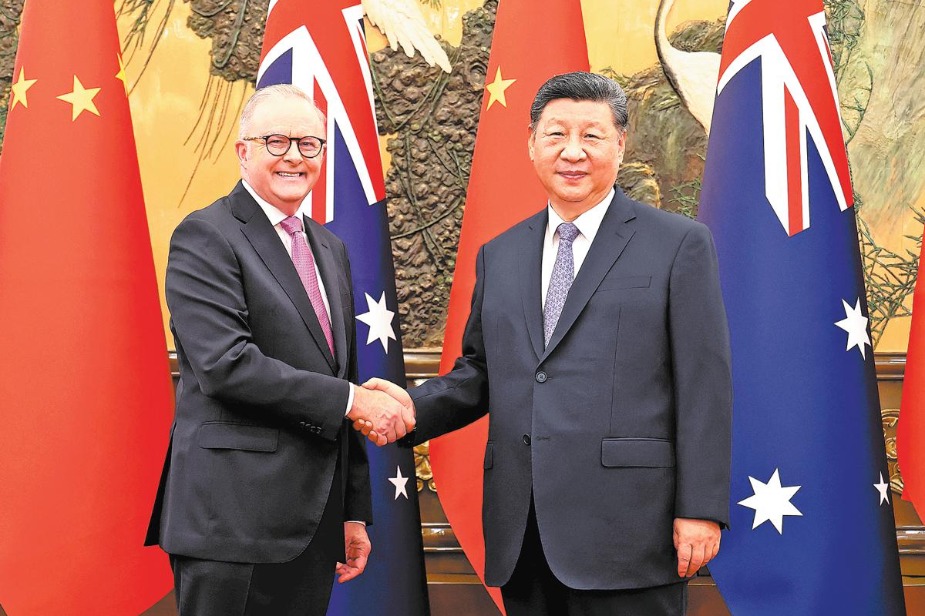Community planners pioneering local governance


On a recent weekend, teachers and students from the School of Architecture of Tsinghua University joined community planners at a small neighborhood garden in Beijing's Qinghe Street, carrying hand-drawn maps and saplings to co-create green space. Lively discussions filled the air, as locals enthusiastically proposed ideas while children offered sweet watermelons, a symbol of neighborly harmony in northern Chinese communities.
The heartwarming scene reflected the unique charm of China's community planner system. From hutong to longtang, special alleyways in Beijing and Shanghai respectively, and from mountainous neighborhoods in Chongqing to rural villages in Chengdu, Sichuan province, a new model of urban governance, blending institutional strength with warmth, is reshaping the development of Chinese cities today.
Traditional urban planning often faced the tricky challenge of "exquisite blueprints disconnected from local conditions". Grand civic projects backed by heavy government investments sometimes failed to meet the nuanced needs of diverse communities. But as urban renewal efforts have progressed across the country, big cities such as Beijing, Shanghai, Chongqing and Chengdu have pioneered an innovative solution: the community planner system.
Through institutionalized arrangements that embedded professional planning teams directly into neighborhoods to provide long-term services, this model has transformed how urban spaces are developed, empowering residents, local business owners and community stakeholders to become co-creators, builders and stewards of their shared environment.
Beijing has pioneered a systematic approach to establishing a responsible community planner system in its general city plan from 2016 to 2035. Following three years of pilot programs, detailed guidelines were introduced in 2019 and implemented in all 16 districts of Beijing by 2021. Today, more than 300 professional teams and over 1,100 dedicated planners are transforming communities through their "research-design-implementation-maintenance" services, facilitating community renewal and micro-space makeovers.
Beijing's districts have developed distinctive planning approaches. For example, Haidian harnesses its academic resources to form a collaboration framework, Chaoyang has developed a dual planner system, introducing global expertise, and Miyun is cultivating specialized teams focused on ecological conservation. These vibrant practices position Beijing as a living laboratory for grassroots urban governance in big cities.
Shanghai's "15-minute life circle" assesses the accessibility of essential services within a short walk for residents, with specific checks on the coverage of primary and secondary schools, eldercare facilities, cultural and sports venues, healthcare centers, wet markets and football fields within a 5-to-15-minute radius.
As Shanghai advances the initiative, its districts have tailored their own community planner systems to local needs. These planners also serve as "translators", decoding residents' needs, government policies, and technical standards, while doing the actual work of planners and coordinating stakeholders to work out actionable plans through online and offline engagement, turning urban visions into tangible, community-driven reality.
Since launching its program to engage planners, architects and engineers in communities in 2022, Chongqing has mobilized more than 2,500 such specialists to serve about 2,000 neighborhoods. An apt example of the program's success is the transformation of a village in Jiulongpo district, where a worn-out basketball court was redesigned into a multi-functional hub for sports and outdoor film screenings. This program has injected fresh vitality into public life, demonstrating that thoughtful urban renewal can also preserve heritage sites.
As for Chengdu, it has recruited more than 500 professionals since initiating the first rural planner program in 2010, extending the services to all townships. Chengdu's Chenghua district innovative model has mobilized more than 4,000 community stakeholders, resulting in over 500 collaborative projects. For instance, it has transformed an idle plaza into a vibrant community hub. The project has seamlessly integrated neighborhood renewal, cultural preservation, social participation and smart governance, serving as both a gathering space and a platform for vibrant community activities.
China is implementing a novel development program featuring participatory community planning. Between 2019 and 2024, the country refurbished 280,000 old urban neighborhoods, benefiting about 48 million households and more than 120 million residents.
The thousands of community planners working at the grassroots level are pioneering a distinctly Chinese approach to the urban renewal program, one that rejects both radical reconstruction and static preservation.
This innovative approach skillfully balances government leadership with extensive market and social participation. Through institutional innovation, it establishes mechanisms for professional teams to serve communities. From technical support to community empowerment, it is dedicated to addressing residents' genuine needs. The approach shows how to comprehensively upgrade living environments while preserving existing social networks and collective memories of places.
This summer, university campuses will witness a wave of teams heading toward neighborhoods to co-create solutions with residents to community problems, abiding by China's urban governance philosophy of "cities built by the people and for the people".
A quiet revolution is unfolding as planners migrate from offices to street corners, and as community feedback transforms into genuine design drivers. Urban planning is improving because institutional designs prioritize people's well-being, and planners trade blueprints for muddy boots. And most importantly, residents feel proud on seeing their ideas materialize in the improvement of urban landscapes.
The author is a professor at the School of Architecture, Tsinghua University.
The views don't necessarily reflect those of China Daily.
If you have a specific expertise, or would like to share your thought about our stories, then send us your writings at opinion@chinadaily.com.cn, and comment@chinadaily.com.cn.



































